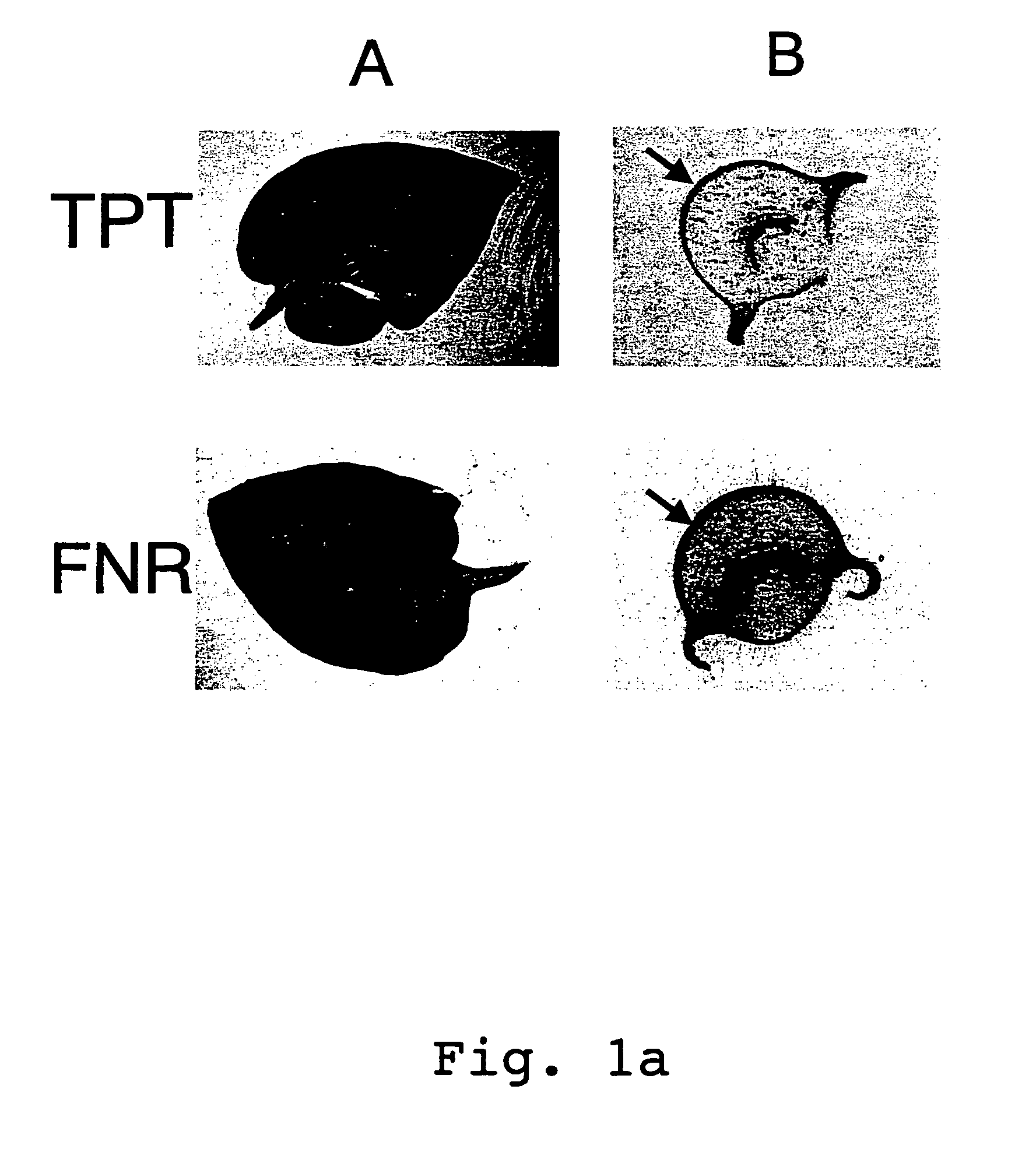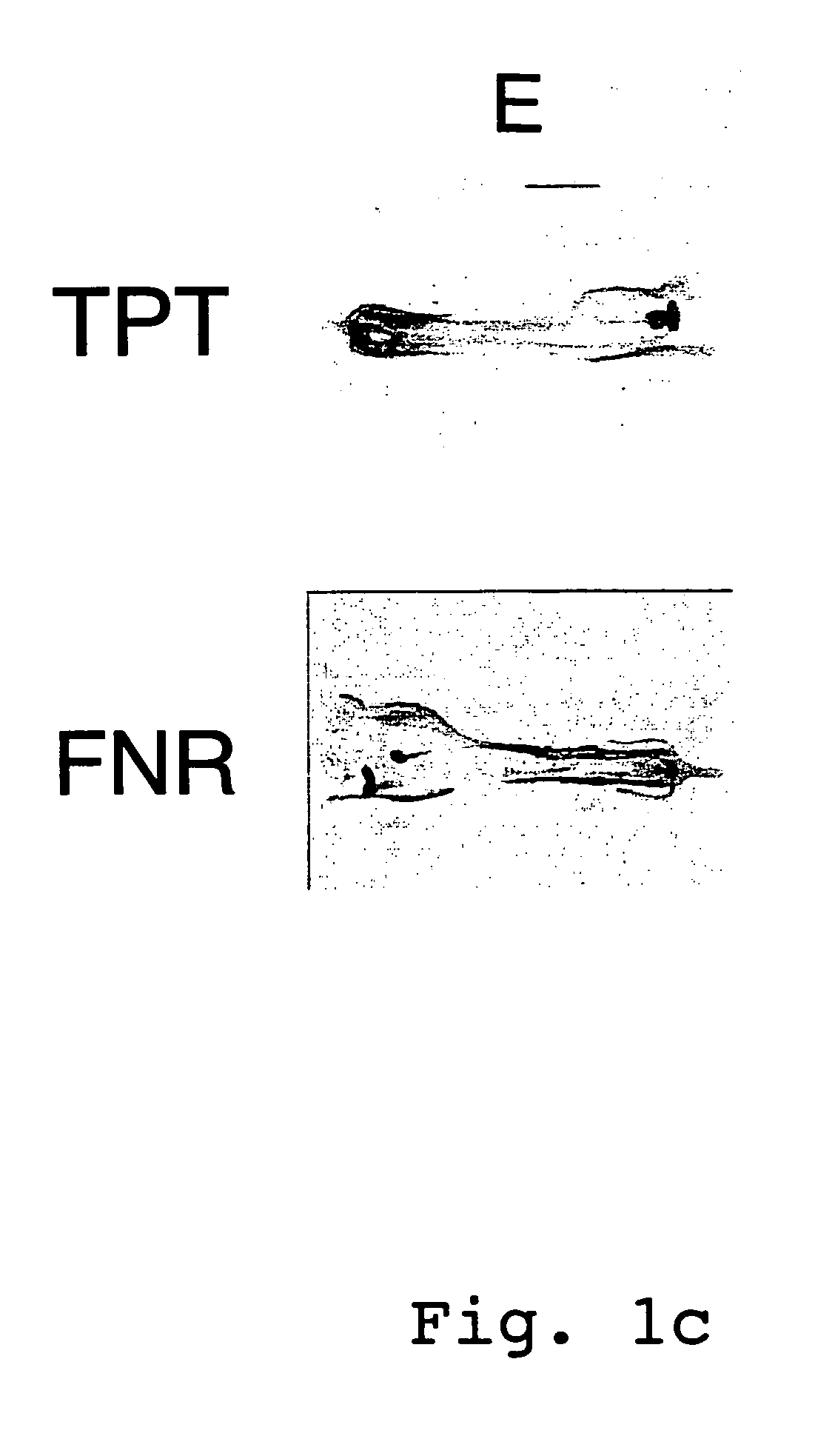Expression cassettes for transgenic expression of nucleic acids
a technology of nucleic acid and cassette, which is applied in the field of expression cassettes for transgenic expression of nucleic acids, can solve the problems of changing the expression of transgenes, affecting the protection of plants, etc., and achieving the effect of reducing the number of cassettes
- Summary
- Abstract
- Description
- Claims
- Application Information
AI Technical Summary
Benefits of technology
Problems solved by technology
Method used
Image
Examples
example 1
Isolation of Genomic DNA from Arabidopsis thaliana (CTAB Method)
[0303]Genomic DNA is isolated from Arabidopsis thaliana by grinding approx. 0.25 g of leaf material of young plants in the vegetative state in liquid nitrogen to give a fine powder. The pulverulent plant material is introduced together with 1 ml of 65° C. CTAB I buffer (CTAB: hexadecyltrimethylammonium bromide, also called cetyltrimethylammonium bromide; Sigma Cat.-No.: H6269) and 20 μl of β-mercaptoethanol into a prewarmed second mortar and, after complete homogenization, the extract is transferred to a 2 ml Eppendorf vessel and incubated with careful regular mixing at 65° C. for 1 h. After cooling to room temperature, the mixture is extracted with 1 ml of chloroform / octanol (24:1, equilibrated by shaking with 1 M Tris / HCl, pH8.0) by slowly inverting the vessel and the phases are separated by centrifugation at 8,500 rpm (7,500×g) and room temperature for 5 min. Subsequently, the aqueous phase is extracted again with 1 ...
example 2
Transformation of Tobacco, Oilseed Rape and Potato
[0325]Tobacco was transformed via infection with Agrobacterium tumefaciens. According to the method developed by Horsch (Horsch et al. (1985) Science 227: 1229-1231). All constructs used for transformation were transformed into Agrobacterium tumefaciens by using the freeze / thaw method (repeated thawing and freezing). The Agrobacterium colonies comprising the desired construct were selected on mannitol / glutamate medium comprising 50 μg / ml kanamycin, 50 μg / ml ampicillin and 25 μg / ml rifampicin.
[0326]Tobacco plants (Nicotiana tabacum L. cv. Samsun N N) were transformed by centrifuging 10 ml of an Agrobacterium tumefaciens overnight culture grown under selection, discarding the supernatant and resuspending the bacteria in the same volume of antibiotics-free medium. Leaf disks of sterile plants (approx. 1 cm in diameter) were bathed in this bacteria solution in a sterile Petri dish. The leaf disks were then laid out in Petri dishes on MS ...
example 3
Studies on the Suitability of the Putative Ferredoxin (pFD) Promoter
[0329]Cloning of the pFD Promoters from Arabidopsis thaliana
[0330]The putative ferredoxin promoter was amplified from genomic Arabidopsis thaliana DNA by means of PCR using the primers pWL35 and pWL36. The primer pWL35 starts with the SalI and EcoRI restriction cleavage sites which are located immediately upstream of the coding region of the pFD gene and are highlighted in bold type. The primer pWL36 starts with the SalI and Asp718 restriction cleavage sites highlighted in bold type.
[0331]
Primer pWL35(SEQ ID NO: 9)5′ GTC GAC GAA TTC GAG AGA CAG AGA GAC GG 3′Primer pWL36(SEQ ID NO: 10)5′ GTC GAC GGT ACC GAT TCA AGC TTC ACT GC 3′
[0332]Reaction Mixture:[0333]1 μl Genomic Arabidopsis DNA (approx. 250 ng)[0334]0.5 μl Tth polymerase (2 U / μl)[0335]3 μl Mg(OAc)2 (25 mM, final conc. 1.5 mM Mg2+)[0336]15.2 μl 3.3× buffer[0337]4 μl dNTPs (2.5 mM each, Takara, final concentration: 200 μM each)[0338]24.3 μl H2O
[0339]PCR Conditi...
PUM
| Property | Measurement | Unit |
|---|---|---|
| nucleic acid sequence | aaaaa | aaaaa |
| resistance | aaaaa | aaaaa |
| nucleic acid | aaaaa | aaaaa |
Abstract
Description
Claims
Application Information
 Login to View More
Login to View More - R&D
- Intellectual Property
- Life Sciences
- Materials
- Tech Scout
- Unparalleled Data Quality
- Higher Quality Content
- 60% Fewer Hallucinations
Browse by: Latest US Patents, China's latest patents, Technical Efficacy Thesaurus, Application Domain, Technology Topic, Popular Technical Reports.
© 2025 PatSnap. All rights reserved.Legal|Privacy policy|Modern Slavery Act Transparency Statement|Sitemap|About US| Contact US: help@patsnap.com



